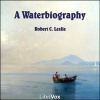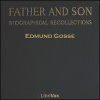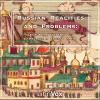Candido Mariano da Silva Rondon - Roosevelt-Rondon Scientific-Expedition and the Telegraph Line Commission
Candido Mariano da Silva Rondon
100%
Speed
Summary
The Roosevelt–Rondon Scientific Expedition was the famous survey that took place in 1913-14 to follow the path of the Rio da Dúvida («River of Doubt») in the Amazon basin. The expedition was jointly led by Theodore Roosevelt, the former President of the United States, and Colonel Cândido Rondon, the Brazilian military engineer known for his explorations of the Western Amazon Basin and his lifelong support of Brazilian indigenous populations. Almost from the start, the expedition was fraught with problems: diseases left the explorers in a constant state of sickness; the canoes were unsuitable to the rapids and were lost; the food provisions were unsufficient, and the encounters with animals and wild native tribes, a source of concern. Of the 19 men who went on the expedition, only 16 returned. On October 1915, the Brazilian leader of the expedition, Colonel Cândido Rondon gave three public lectures in Rio de Janeiro, in which he offered his first hand account of the Roosevelt-Rondon Expedition and of his more encompassing work of laying telegraph lines across the wilderness of Brazil, allowing for the integration of the recent Republic. Throughout his life, Rondon laid over 4,000 miles of telegraph line through the jungles of Brazil, while opening roads, clearing lands, mapping the land, and establishing cordial relations with the Indians. He maintained contact with several indigenous peoples. In his lectures, translated into English soon after their publication in Portuguese, besides describing all the adventures of the exploration of the Amazon, also told by Roosevelt in his well known “Through the Brazilian Wilderness”, Rondon shows his concern and support of the native population, showing a perspective of pacifism and respect towards them which was in stark contrast to the usual treatment received by those peoples at the time. — Summary by Leni
Authorization
By logging in, you agree to the terms and conditions.












No comments